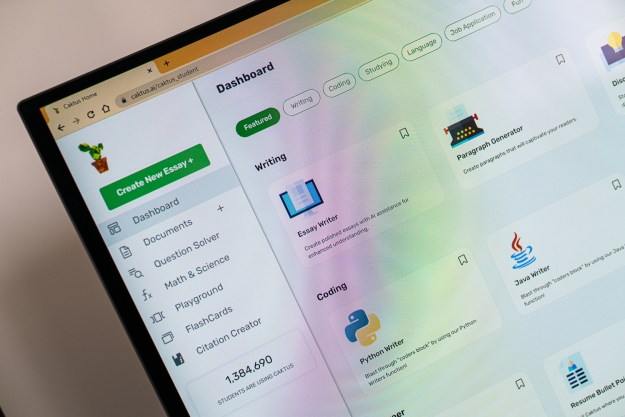Apple's iMessage isn't as universal as some of the best messaging applications, but as a default app, it's exceedingly popular, and could be considered one of the best Mac apps. It's an Apple-exclusive app, however, so getting it working somewhere else isn't easy. Fortunately, though, there are some tricks you can use to get iMessage working on Windows. Here's how to do it.
How to use iMessage on Windows using Phone Link
Microsoft has a new Insider program feature for iPhone users that lets them link up their iPhone with Windows through the Phone Link app, giving you quick and easy access to iMessage from your PC.
Step 1: Sign up to the Windows Insiders program if you haven't already. There's no guarantee this will give you access to the Phone Link beta, but it's the only way to have a chance of doing so for now.
Her are some details on becoming part of the Insider Program.
Step 2: Download the Phone Link app on your PC. It needs to be version 1.23012.169.0 or later.
Step 3: Start the app and when prompted, select iPhone from the available options.
Step 4: Follow the on-screen instructions to connect your phone over Bluetooth, and confirm all of the requests for synchronization and permissions.

Step 5: On your iPhone, give permission to the app within your Bluetooth settings.
Step 6: When the setup is complete, you should see your iPhone mirrored within the Phone Link app, with access to messages, calls, and contacts, giving you easy iMessage access on Windows.

How to use iMessage on Windows using a MacBook
Another way to get iMessage on Windows is to use Chrome Remote Desktop. First, though, you'll need to set up your iOS and Mac devices.
Step 1: Open the Settings app on your iPhone, and select your Apple ID account.
Step 2: Select iCloud.
Step 3: If it isn't already, toggle Messages to green, to confirm it's using iCloud.
Step 4: Switch over to your MacBook, and launch the Messages app. Then sign in with your Apple ID and password. If you have two-factor authentication enabled, enter your verification when prompted.
Step 5: In the app's Menu bar, select Messages followed by Preferences.
Step 6: Select the iMessage tab when it pops up.
Step 7: If necessary, enable your account and Messages in iCloud.
Step 8: Activate the number and email address that you want to use with iMessage on Windows.
Step 9: Choose where you want any new conversations to start, then select the Sync Now button.
Step 10: Now that iMessage is working, we need to setup Chrome Remote Desktop.
Download the Chrome browser from the official website and install the application.
Step 11: Sign in to your Google account within Chrome — or make one if you haven't got one.
Step 12: Navigate to the Chrome Remote Desktop page and select Share this screen. Then select the blue download button next to Share this screen, followed by the Add to Chrome button in the pop-up window. That will download the Chrome Remote Desktop extension.
Step 13: To use iMessage on Windows, your Mac needs to remain active, so it might be worth navigating to System Preferences >* Energy Saver*, and setting your Mac to not sleep automatically when the display is off. Alternatively, you can activate the Mac while using iMessage and leave it to go into standby when not in use.
Step 14: On your Windows PC or laptop, install Chrome from the official website if you don't have it already, and sign in with your account, or create one if you don't have one.
Step 15: Navigate to the Chrome Remote Desktop extension page and select Add to Chrome to add the extension to your Chrome install.
Step 16: On your MacBook, navigate to the Chrome Remote Desktop web app, and select Share this screen > + Generate Code.
Step 17: On your Windows PC, navigate to the Chrome Remote Desktop web app and select Share this screen. Then, under the heading Connect to another computer, input the code you generated on your MacBook.
Step 18: When prompted on your MacBook, give permission for the connections.
If you followed these steps correctly, you should now have a your Mac's screen streamed to your Windows PC. You can then launch the iMessage app through your Streamed MacBook.
Editors' Recommendations
- How to download YouTube videos on PC, iOS, Android, and Mac
- ChatGPT: how to use the viral AI chatbot that everyone’s talking about
- MacGPT: how to use ChatGPT on your Mac
- How to share Google One storage with your family
- One of Windows 11’s most requested features may launch soon






